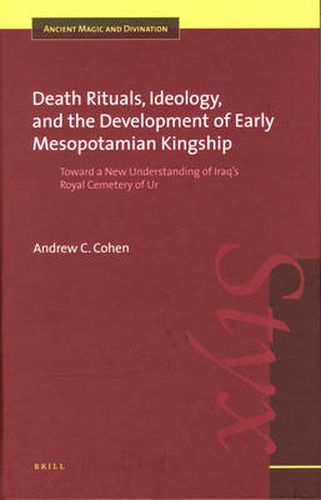Readings Newsletter
Become a Readings Member to make your shopping experience even easier.
Sign in or sign up for free!
You’re not far away from qualifying for FREE standard shipping within Australia
You’ve qualified for FREE standard shipping within Australia
The cart is loading…






At the beginning of Mesopotamia’s Early Dynastic period, the political landscape was dominated by temple administrators, but by the end of the period, rulers whose titles we translate as king assumed control. This book argues that the ritual process of mourning, burying, and venerating dead elites contributed to this change. Part one introduces the rationale for seeing rituals as a means of giving material form to ideology and, hence, structuring overall power relations. Part two presents archaeological and textual evidence for the death rituals. Part three interprets symbolic objects found in the Royal Cemetery of Ur, showing they reflect ideological doctrines promoting the office of kingship. This book will be particularly useful for scholars of Mesopotamian archaeology and history.
$9.00 standard shipping within Australia
FREE standard shipping within Australia for orders over $100.00
Express & International shipping calculated at checkout
At the beginning of Mesopotamia’s Early Dynastic period, the political landscape was dominated by temple administrators, but by the end of the period, rulers whose titles we translate as king assumed control. This book argues that the ritual process of mourning, burying, and venerating dead elites contributed to this change. Part one introduces the rationale for seeing rituals as a means of giving material form to ideology and, hence, structuring overall power relations. Part two presents archaeological and textual evidence for the death rituals. Part three interprets symbolic objects found in the Royal Cemetery of Ur, showing they reflect ideological doctrines promoting the office of kingship. This book will be particularly useful for scholars of Mesopotamian archaeology and history.